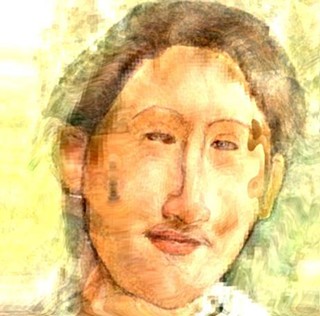OUR MAN IN HAVANA
Proponents of Hunter S. Thompson gonzo journalism aside, it's usually considered bad form, at the very least, for a reporter to get involved in shaping a story. But however awkward Tucson writer Tom Miller felt while he was almost inadvertently helping a down-and-out Cuban athlete come to America, he's satisfied now that the woman he assisted--former Pima College track star Yuliana Perez--is becoming a big deal in the United States. Not to mention the fact that an HBO team, working on a program about Perez, flew Miller to Cuba last week to tramp around Perez's old haunts and help tell her story.Perez was actually born in Tucson to parents who'd come over with about 120,000 other Cubans during the 1980 Marielito boatlift. But the family fell apart, and a social worker arranged for Perez and her brothers to be raised by a grandmother back in Havana.
Miller had been visiting Cuba since 1987, the principle result of which was his book Trading With the Enemy: A Yankee Travels Through Castro's Cuba. During a 1998 trip, Miller got wind of the Perez story; she was by then a broad jump star on the Pan Am team, but wasn't allowed to follow the team to the United States. Because she was an American citizen, the Cuban sports ministry was afraid she'd walk away.
Miller interviewed her, and later returned to Cuba with an affidavit for her to sign to grant him access to some of her legal records in California. While they were having the document notarized at the U.S. Interests Section in Havana, the clerk offered Perez a passport application.
"As a journalist, I don't want to influence the sway of the story," says Miller. "On the other hand, who am I to say she can't have a passport? She was entitled to it, and I wasn't going to put myself in the way of denying it."
The next time Miller ran across Perez, she was gaunt and living on the Havana streets. Perez had been kicked off the team--probably because she'd obtained an American passport--and she'd had a falling-out with her family. Miller gave her a little money, and a few weeks later, back in Tucson, he got a call from an American official in Cuba.
"They said she wants to go to Tucson, and was that all right with me?" Miller recalls. "Well, it wasn't up to me. We weren't friends; she was just somebody I knew professionally."
Miller didn't even have contact with Perez once she'd arrived here and joined the PCC track team in 2000. The only time Miller has seen her since she left Cuba, he says, is when KUAT's Ted Robbins got them together for an interview.
Nevertheless, HBO has tapped Miller as a Perez expert for an upcoming installment of Real Sports With Bryant Gumbel. Correspondent Frank Deford and an HBO crew flew Miller back to Havana last week for some interviews and color footage. The team was in Tucson early this week gathering additional material. The segment should air sometime in May.
Perez, by the way, is now living in Arkansas, prepping for Olympic tryouts.
Another, quite different figure that Miller crossed paths with in Cuba, by the way, is disgraced foreign correspondent Jack Kelley, who resigned from USA Today in January when somebody finally figured out he'd been falsifying and plagiarizing stories for years. At least two top USA Today editors have also quit in the wake of the scandal.
Miller ran across Kelley in Havana in March 2000, when the latter was "working on one of the most egregious of his invented stories," according to Miller. Kelley claimed to have encountered some people in Cárdenas sneaking down shore to escape to America.
"I remember the story clearly when it came out," says Miller, "because I thought, I've been coming here 13 years, and I've never had access like that, where everything fell exactly into place, no loose ends, and all clandestine--and in a language he did not speak!"
Miller didn't complain to USA Today at the time ("I feel no interest in USA Today's well-being," he says), but the paper called Miller for help when it started investigating Kelley's misdeeds on that story, seeking advice, he says, on photo interpretation, analysis of the story and factual problems.
Incidentally, one-time USA Today editor Michael A. Chihak, now publisher of the Tucson Citizen, mentioned in his column last weekend that he had edited some of Kelley's stories in the late 1980s, and as late as 1991, but at that time found nothing amiss. But Chihak shouldn't feel too bad if Kelley managed to slip some minor, cleverly camouflaged fakery past him; later editors failed to question even Kelley's most outrageous fabrications, like seeing three decapitated heads rolling down the street after a suicide bombing in Israel.
AND THE WINNERS ARE ...
The Arizona International Film Festival handed out a slew of awards last week at the conclusion of its Reel Frontier Film and Video Competition.Best Feature Documentary went to Mojados: Through the Night by Tommy Davis, a film that followed migrants illegally crossing the border. Best Feature went to Art Jones for Lustre, about post-Sept. 11 New York.
Judged Best of Arizona was Tucson's Beverly Seckinger, for her documentary Laramie Inside Out, concerning the aftermath of a gay-bashing incident in her Wyoming home town (see "Loving Laramie," Feb. 26).
Versatile San Francisco filmmaker Pepe Urquijo received the Arizona Independent Film Award, following in the footsteps of Bill Plympton, Charles Burnett, Edward James Olmos and Shirley Cheechoo.
For a list of other winners, visit azmac.org.




